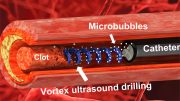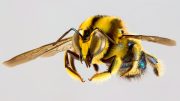
A new study reveals a significant link between meal timing and cardiovascular health. Delayed first meals and late last meals increase the risk of cardiovascular and cerebrovascular diseases, respectively. Conversely, longer overnight fasting periods appear to reduce this risk. These findings suggest that earlier meals and extended fasting might help prevent cardiovascular diseases. Credit: SciTechDaily.com
Research indicates that eating earlier in the day and extending night-time fasting can lower the risk of cardiovascular diseases, based on a study of over 100,000 individuals.
Cardiovascular diseases are the leading cause of death in the world according to the Global Burden of Disease study, with 18.6 million annual deaths in 2019, of which around 7.9 are attributable to diet. This means that diet plays a major role in the development and progression of these diseases. The modern lifestyle of Western societies has led to specific eating habits such as eating dinner late or skipping breakfast.
In addition to light, the daily cycle of food intake (meals, snacks, etc.) alternating with periods of fasting synchronizes the peripheral clocks, or circadian rhythms, of the body’s various organs, thus influencing cardiometabolic functions such as blood pressure regulation. Chrononutrition is emerging as an important new field for understanding the relationship between the timing of food intake, circadian rhythms, and health.
Chrononutrition and Cardiovascular Risk
Scientists used data from 103,389 participants in the NutriNet-Santé cohort (79% of whom were women, with an average age of 42) to study the associations between food intake patterns and cardiovascular disease. To reduce the risk of possible bias, the researchers accounted for a large number of confounding factors, especially sociodemographic factors (age, sex, family situation, etc.), diet nutritional quality, lifestyle, and sleep cycle.
The results show that having a first meal later in the day (such as when skipping breakfast), is associated with a higher risk of cardiovascular disease, with a 6% increase in risk per hour delay. For example, a person who eats for the first time at 9 a.m. is 6% more likely to develop cardiovascular disease than someone who eats at 8 a.m.
When it comes to the last meal of the day, eating late (after 9 p.m.) is associated with a 28% increase in the risk of cerebrovascular disease such as stroke compared with eating before 8 p.m., particularly in women.
Finally, a longer duration of night-time fasting – the time between the last meal of the day and the first meal of the following day – is associated with a reduced risk of cerebrovascular disease, supporting the idea of eating one’s first and last meals earlier in the day.
Key Takeaways on Meal Timing and Heart Health
These findings, which need to be replicated in other cohorts and through additional scientific studies with different designs, highlight a potential role for meal timing in preventing cardiovascular disease. They suggest that adopting the habit of eating earlier first and last meals with a longer period of night-time fasting could help to prevent the risk of cardiovascular disease.
Reference: “Dietary circadian rhythms and cardiovascular disease risk in the prospective NutriNet-Santé cohort” by Anna Palomar-Cros, Valentina A. Andreeva, Léopold K. Fezeu, Chantal Julia, Alice Bellicha, Emmanuelle Kesse-Guyot, Serge Hercberg, Dora Romaguera, Manolis Kogevinas, Mathilde Touvier and Bernard Srour, 14 December 2023, Nature Communications.
DOI: 10.1038/s41467-023-43444-3
About NutriNet-Santé
The NutriNet-Santé study is a public health study coordinated by the Nutritional Epidemiology Research Team (EREN-CRESS, Inserm/INRAE/Cnam/Université Sorbonne Paris Nord/Université Paris Cité), which, thanks to the commitment and support of over 175,000 study participants, is advancing research into the links between nutrition (diet, physical activity, nutritional status) and health. The study was launched in 2009 and has already resulted in over 270 international scientific publications. There is still a call for new study participants living in France to continue advancing research into the relationship between nutrition and health.
By spending a few minutes a month responding via the etude-nutrinet-sante.fr secure online platform, participants help to advance knowledge of the relationship between diet and health.








First becoming mysteriously, seriously ill in early 1981 and learning of having multiple very, very mild food and food additive allergy reactions in late 1981, prior to learning of the added monosodium glutamate (MSG; FDA approved for expanded use in 1980) factor, at-home diet and lifestyle experiments in late 1981 provided me with similar results. With the practically harmless individual allergy reactions resolving spontaneously in about six to twelve hours, cutting back to two meals a day with longer fasting between them made it possible for me to mostly (never completely) recover sufficient to return to permanent full-time employment in about a month. Then, it took until the summer of 2000 for me to learn of the true toxicity of added MSG which turned practically harmless individual food allergy reactions into deadly dangerous chronic ones. What they still seem to need to know is that those individual nearly subclinical allergy reactions can still cause low level inflammation, a rise in blood serum of uric acid and losses of calcium (e.g., blood pH regulation) that standard blood testing won’t reveal, which can be especially problematic to mothers, with child bearing being very depleting of their calcium reserves. Bottom line, adulterating added cultured “free” MSG still needs to be banned from all manufactured food products.